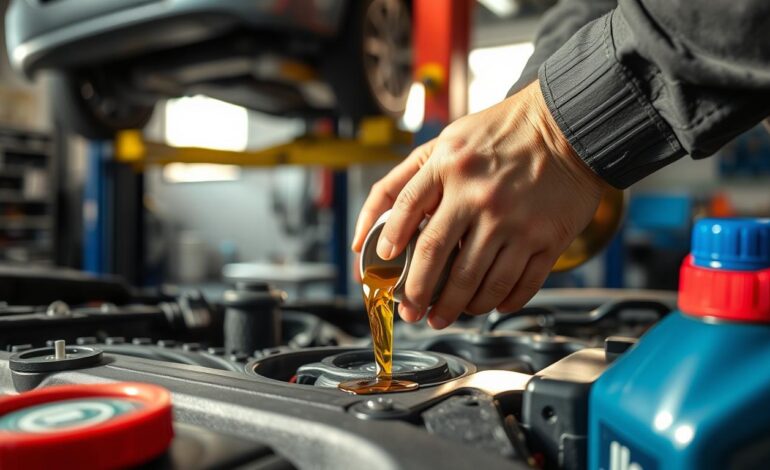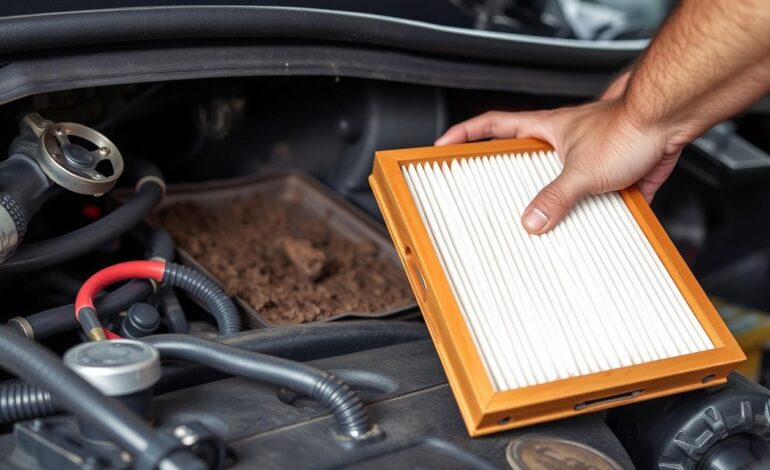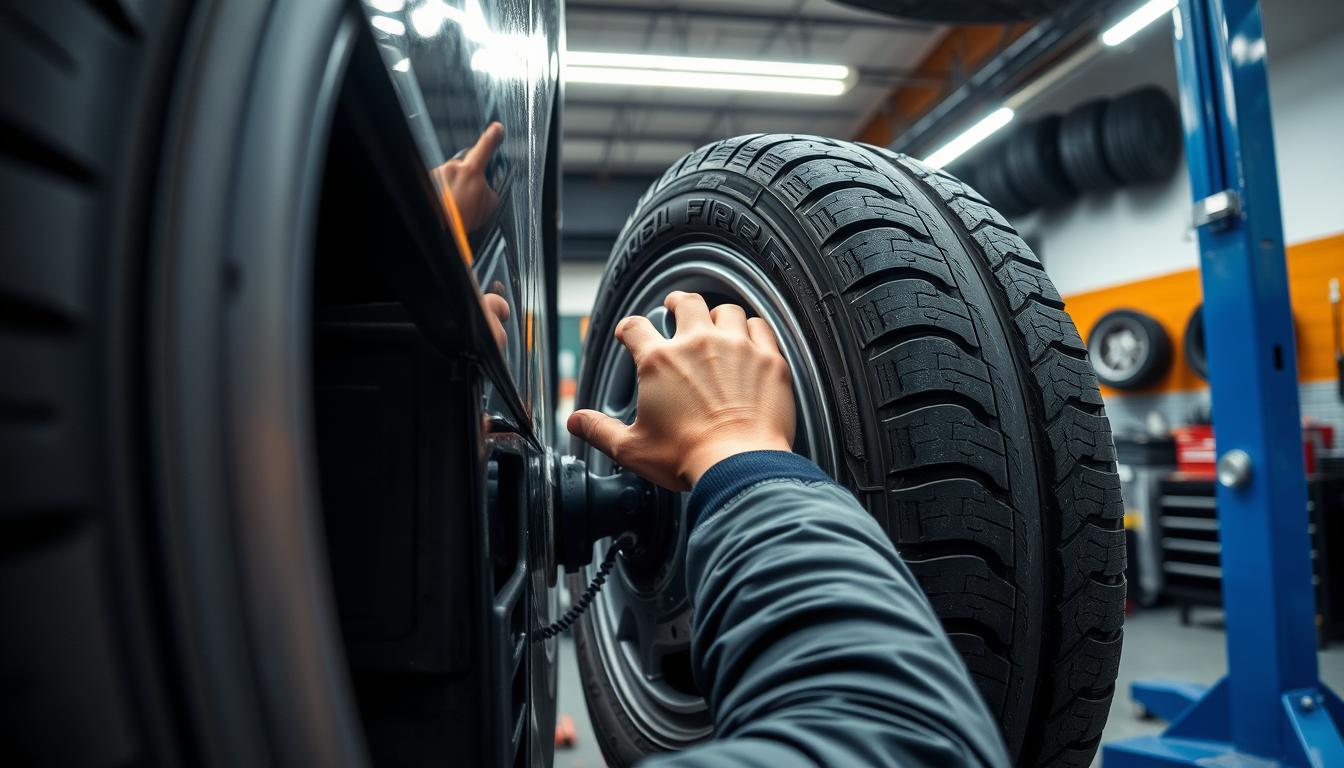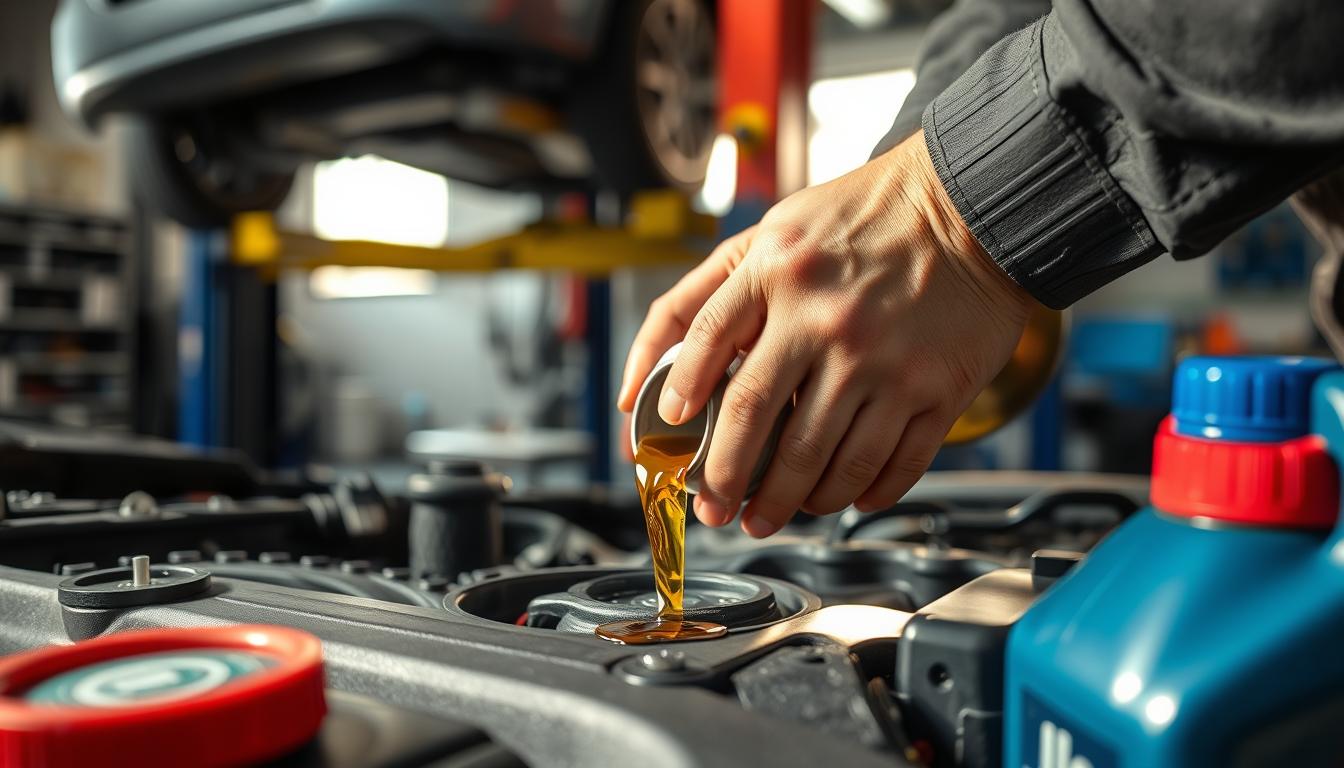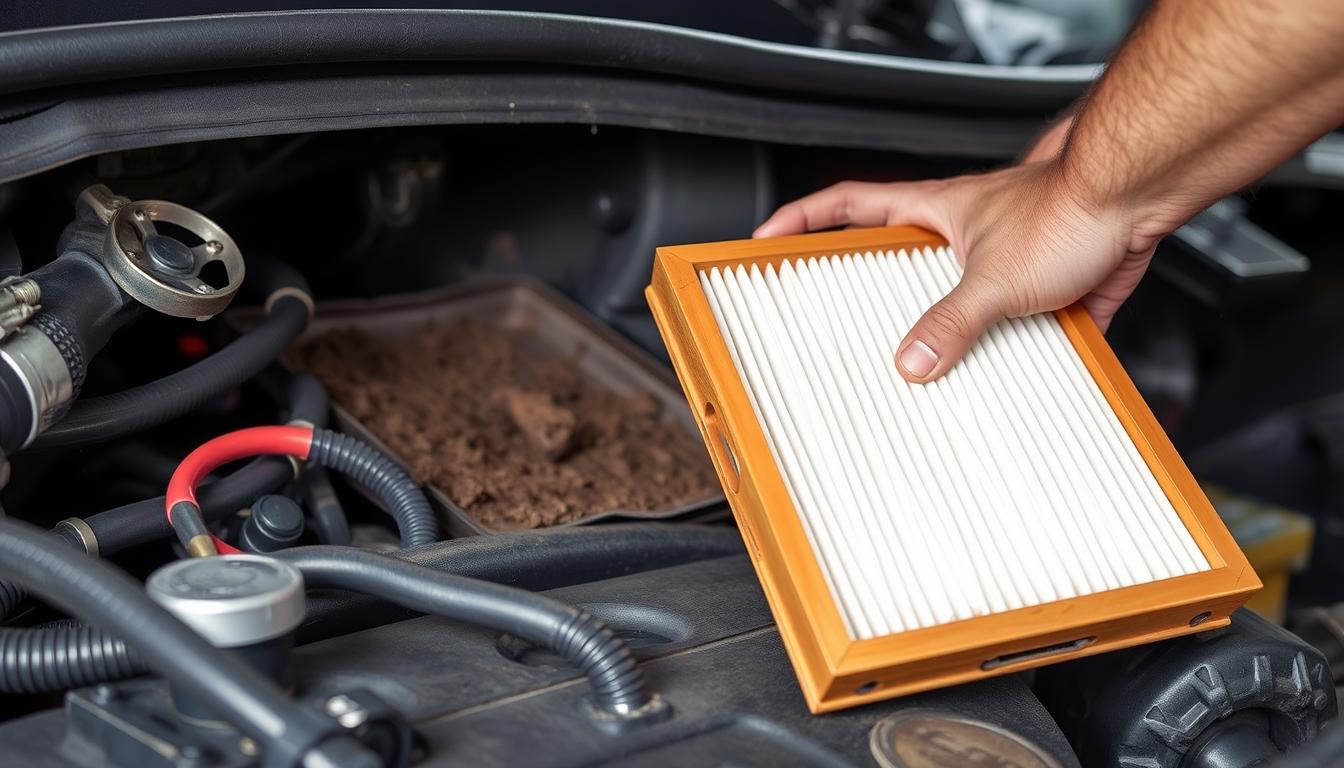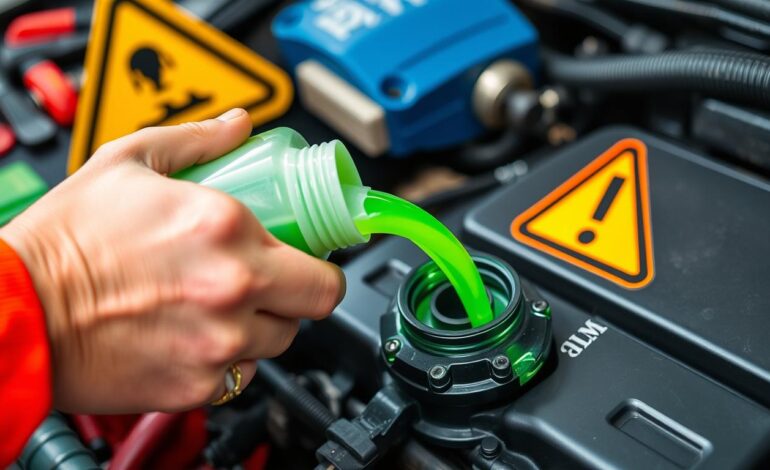
DIY Coolant Flush: Keep Your Engine Running Smoothly
coolant flush is a must to keep your engine running right. It’s easy to do yourself and can save you money. Plus, it makes your car run better and use less fuel.
It’s important to take care of your car’s cooling system. A coolant flush helps avoid overheating and engine damage. With the right tools and a bit of know-how, you can do it yourself. This keeps your engine in top condition.
Key Takeaways
- Regular coolant flush helps maintain engine performance and fuel efficiency
- DIY coolant flush is a cost-effective and straightforward process
- Changing car fluids is essential for a smooth driving experience
- Coolant flush helps prevent overheating and damage to the engine
- Regular maintenance extends the life of your vehicle and reduces repair costs
- A well-maintained cooling system is vital for a healthy engine
Understanding Your Car’s Cooling System
Keeping your car’s engine cool is key to its long life and good performance. The cooling system helps control engine temperature. This prevents overheating and protects engine parts. Replacing coolant regularly is vital for the system’s effectiveness.
The cooling system moves coolant through the engine, absorbing heat. It then transfers this heat to the air. This stops the engine from overheating, which can harm parts like the head gasket and piston rings.
How the Cooling System Works
The cooling system has important parts like the radiator, water pump, thermostat, and coolant hoses. The water pump moves coolant around. The thermostat controls coolant flow to keep the engine at the right temperature.
Signs Your Coolant Needs Flushing
Signs your coolant needs flushing include overheating, corrosion, and coolant discoloration. Seeing these signs means it’s time to flush and replace the coolant. This prevents engine damage.
Benefits of Regular Coolant Maintenance
Regular coolant maintenance boosts engine performance and fuel efficiency. It also extends your engine’s life. Replacing coolant regularly prevents overheating and protects engine parts. This keeps your car running smoothly and efficiently.
Essential Safety Precautions for Working with Coolant
When working with car fluids like coolant, safety is key. Coolant can irritate skin and harm eyes if not handled right. Always wear gloves and protective eyewear when working with it.
It’s also important to work in a well-ventilated area. This helps avoid breathing in harmful fumes. Make sure to dispose of used coolant correctly to protect the environment. Here are some safety tips:
- Wear protective gloves and eyewear
- Work in a well-ventilated area
- Use a drain pan to catch spills
- Dispose of used coolant properly
By following these steps, you can stay safe while working with car fluids. Always be careful and follow safety rules when handling coolant.
Remember, different coolants might need special safety steps. Always check your car’s manual or the coolant’s instructions for the best way to handle and dispose of it.
| Coolant Type | Safety Precautions |
|---|---|
| Traditional Coolant | Wear protective gloves and eyewear, work in a well-ventilated area |
| Organic Coolant | Use a drain pan to catch spills, dispose of used coolant properly |
Required Tools and Materials for a Coolant Flush
Before you start a DIY coolant flush, make sure you have all the right tools and materials. You’ll need a drain pan, socket wrench, and new coolant. It’s important to pick the right coolant type for your engine’s cooling system.
Choosing the correct coolant is key. Whether it’s organic or inorganic, it affects your engine’s cooling performance.
Here are the basic tools you’ll need for a coolant flush:
- Drain pan
- Socket wrench
- New coolant
- Funnel
- Rag
Don’t forget to wear protective gloves and eyewear for safety.
There are different types of coolant to choose from. Each has its own benefits. The most common types are:
| Type of Coolant | Description |
|---|---|
| Organic Coolant | Non-toxic and biodegradable, suitable for most vehicles |
| Inorganic Coolant | More corrosive than organic coolant, but provides better engine cooling |
By picking the right coolant and having the right tools, you can do a successful coolant flush. This keeps your engine’s cooling system running well.
Preparing Your Vehicle for the Coolant Flush
To do a coolant flush right, you need to get your vehicle ready. First, find the coolant reservoir and drain valve. You can look in your vehicle’s owner’s manual for this info. It’s good to know where these parts are and any special tips from the maker.
Working with car fluids means you must be careful. Wear gloves and safety glasses to protect yourself from spills. Also, park your car on a flat surface and use the parking brake to keep it from moving.
Here’s what to do to get your car ready for the coolant flush:
- Locate the coolant reservoir and drain valve
- Consult the vehicle’s owner’s manual for specific instructions and precautions
- Wear protective gear, such as gloves and safety glasses
- Ensure the vehicle is parked on a level surface and apply the parking brake
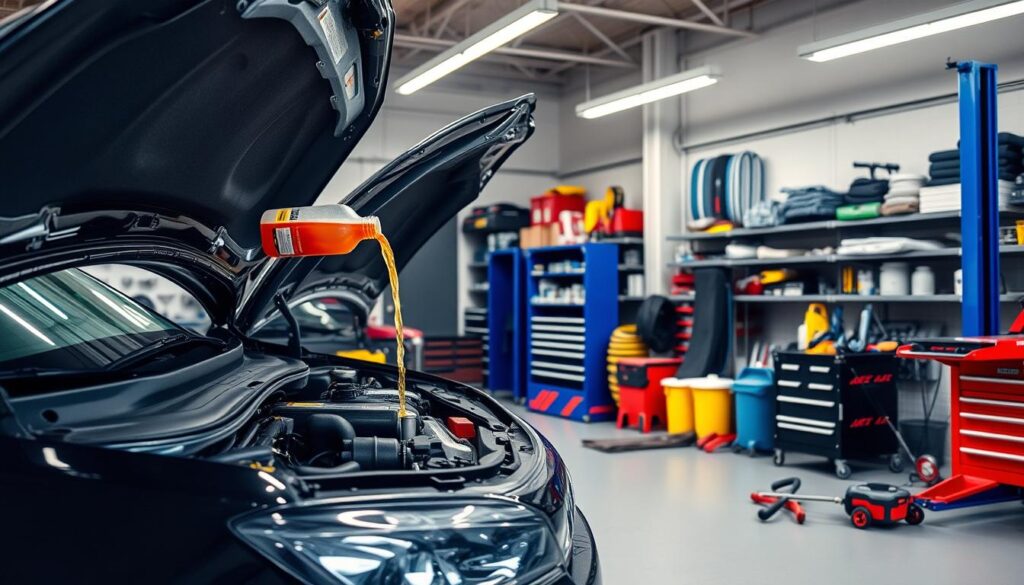
By following these steps and being careful, you’ll be ready for a successful coolant flush. This will help your engine run well. Always handle car fluids with care and dispose of them properly to protect the environment.
Step-by-Step Coolant Flush Procedure
When it comes to engine cooling, a coolant flush is key. It keeps your vehicle’s engine running well. The process includes draining old coolant, flushing the system, and adding new coolant. This is vital to avoid engine damage and corrosion.
First, gather the needed tools and materials. You’ll need a drain pan, gloves, and safety glasses. Always check your vehicle’s manual for the right steps to follow.
Draining the Old Coolant
Find the coolant drain valve and place the drain pan below it. Open the valve and let the old coolant drain out. This step is important to keep the new coolant clean.
Flushing the System
Next, use a garden hose to flush the system. Make sure to remove any debris or sediment. This ensures the new coolant flows well.
Adding New Coolant
After flushing, add the new coolant. Use the recommended type and amount for your vehicle. Always check the coolant level to keep it at the right level.
System Testing
Test the system after the flush to make sure it works right. Check the temperature gauge and look for leaks or damage.
By following these steps and using the right materials, you can replace coolant successfully. Always be safe and follow your vehicle’s manual for specific instructions.
Common Mistakes to Avoid During Your Coolant Flush
When you do a DIY coolant flush, knowing common mistakes is key. These mistakes can harm coolant safety and your car’s engine health. One big error is using the wrong coolant. This can cause corrosion and damage to your car’s car fluids and engine parts.
To avoid this mistake, always check your vehicle’s manual. It will tell you the right coolant for your car. Also, make sure to dispose of used coolant properly. This keeps the environment safe and ensures coolant safety.
- Using the wrong type of coolant
- Not properly disposing of used coolant
- Not following the manufacturer’s instructions for the coolant flush procedure
By being careful and taking the right steps, you can do a safe and effective coolant flush. This protects your car’s engine and keeps your car fluids in good shape. Always put coolant safety first and follow the recommended guidelines for handling and disposing of coolant.
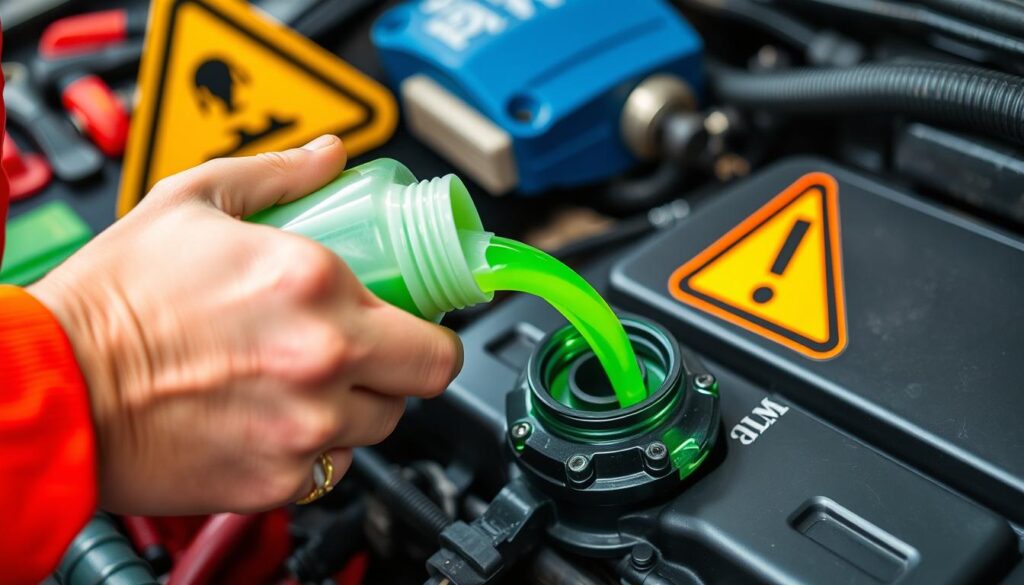
Proper Disposal of Used Coolant
Handling coolant disposal with care is key to protect our planet and health. Used coolant, or car fluids, can be dangerous if not thrown away right. It can pollute soil, water, and air, harming people, animals, and plants.
To dispose safely, take used coolant to a recycling center or a place approved for hazardous waste. These places have the right tools and knowledge to deal with coolant disposal. Look online for local spots that take used car fluids or ask your local government for advice.
Environmental Considerations
Not disposing of coolant properly can really hurt our environment. Used coolant might have harmful chemicals like ethylene glycol. If not thrown away right, it can poison soil and water, harming fish, animals, and people. By recycling used coolant, you help keep our planet clean and safe.
Local Disposal Facilities
Many places have special spots for coolant disposal and other hazardous waste. These places might let you drop off used car fluids or have special events for it. Check with your local government or waste management to find where to take it in your area. Some stores like AutoZone or O’Reilly Auto Parts also recycle used coolant.
Remember, it’s very important to dispose of coolant correctly. By doing so, you help keep our environment clean and our community healthy. Taking the time to recycle used car fluids makes a big difference.
Maintaining Your Cooling System After the Flush
Keeping your engine cooling system in good shape is key after a coolant flush. You should check the coolant level and condition often. Also, make sure to do regular system checks.
Some important tasks to include in your maintenance routine are:
- Checking the coolant level regularly to ensure it is at the recommended level
- Inspecting the coolant for any signs of contamination or degradation
- Performing a coolant replacement as recommended by the manufacturer
By following these tips and staying on top of your engine cooling system maintenance, you can help improve engine performance and increase the lifespan of your vehicle. Proper maintenance is key to preventing overheating and other issues that can cause damage to your engine.
Remember to always refer to your vehicle’s owner’s manual for specific guidance on maintaining your cooling system. If you’re unsure about any aspect of the process, it’s always best to consult a professional mechanic.
Regular engine cooling system maintenance can help prevent issues such as overheating, corrosion, and damage to other components. By staying on top of your maintenance routine and performing tasks such as coolant replacement, you can help keep your vehicle running smoothly and prolong its lifespan.
Conclusion: Keeping Your Engine Protected Through Regular Maintenance
A regular coolant flush is key to a smooth-running engine. It keeps your car’s cooling system in top shape. This helps your engine last longer, run better, and saves you from expensive fixes later.
Don’t skip the coolant flush – it’s a smart move for your engine’s health. Follow this guide to keep your engine in great condition. With some effort and basic care, your car will serve you well for many years.

